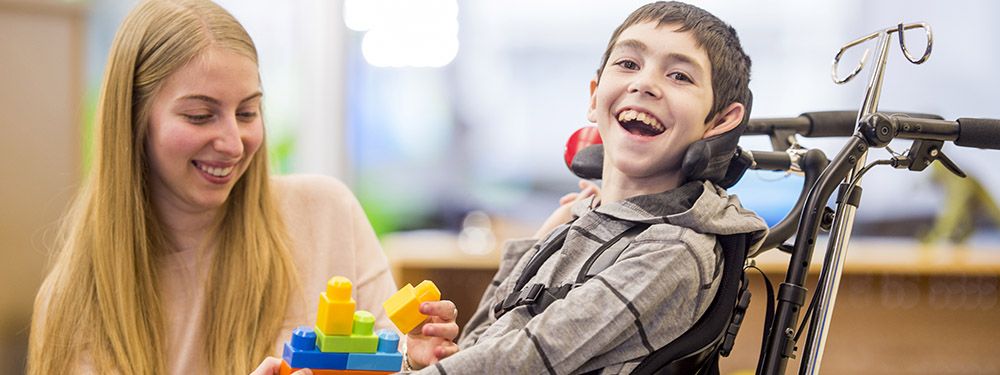
Francis Gonzalez, Headteacher at Richard Cloudesley School – a special school based in north London – describes how COVID-19 has enabled the school community to adapt how children and families are supported both in and out of school
Out of adversity comes opportunity. This is certainly true of how we as leaders, teachers and support staff have responded to the Coronavirus pandemic. Staff throughout schools have seized this opportunity to embrace new ways of working in order to provide education and welfare for pupils. Within days of the announcement of school closures, the idea of the virtual school was born. As the headteacher of Richard Cloudesley School, I have been so impressed by the innovation, determination, and sense of community that has emerged from the challenging circumstances we are all faced with. At a time when each of us are worried about our own loved ones, my teachers and support staff have gone out of their way to ensure that our pupils have access to an online curriculum that works in the home environment, that children have the care packages they need to be well looked after, and in some cases, that families have food on the table.
The story so far
Our 86 pupils come from 12 London boroughs. They travel in from as far as Barnet, Lambeth and Redbridge and all rely on local authority transport.
All have a physical disability, and many have complex medical needs. Most, 82%, use alternative forms of communication (AAC), and all fall under the government’s original category of ‘extremely vulnerable’ to COVID-19. This means they should consider staying at home.
A quarter of our staff are shielding because either they, or a member of their household, have been asked to by their GP. All of our staff keep in touch using the SLACK app which allows us to post news, check people are okay, and to communicate effectively in teams.
For about a year we have been using Class Dojo to share photos, videos and home learning with families. All of our families engage with this. They tell us they really value being able to take part in the learning experience. Therapists and other professionals are also able to contribute to discussions about learning and to provide advice and feedback.
By the time the government announced a national lockdown on 23 March, 86% of our families had chosen to keep their children at home. This meant that only 12 pupils were still attending at the time of lockdown. The guidance from Public Health England has been to stay at home, however, the government asked schools to stay open for vulnerable pupils. This means those who have an EHCP whose needs ‘cannot be met safely in the home environment’; in other words, those who are safer at school than at home.
At that time, we wrote to all parents, explaining that we remain open, and that they should let us know if they wished their child to remain at school during the lockdown. Two parents discussed this with me before deciding to keep their child at home. Leaders identified five children who they thought should attend our on-site provision; three of these families agreed and brought in their children. The government guidance is clear that the final decision lies with families. The school remains open and we continue to remind families to get in touch if they change their mind about their child coming to school.
Our virtual school
This has been a challenging time for our pupils and their families. When planning our response to the global pandemic, we have thought carefully about how we keep everyone as safe as possible.
We are open, things just look at bit different at the moment. We are continuing to provide for every child in the school through a combination of:
- outreach to provide help at home
- online learning
- bespoke support for those with particular needs
- on-site provision for those safer at school than home.
Leaders have devised detailed business continuity and recovery plans. The continuity plan helps us to maintain most of our usual school procedures, meetings, and systems, and therefore keep the school running smoothly.
Our recovery plan will enable us to open as safely and efficiently as possible when the time comes.
Keeping children safe
Because of their complex needs, all of our pupils are vulnerable and we take the welfare of our pupils extremely seriously. We meet with health colleagues every week to review every single child’s needs on an individual basis, and we remained open during the Easter holiday to keep up the welfare contact, on-site provision and outreach support which included:
- Daily welfare messages to parents
- Twice-weekly telephone calls from teacher and medical team
- Weekly safeguarding meeting to assess every child
- Teachers completing daily virtual registers
- Updating the safeguarding and e-safety policies
- Teachers’ welfare logs checked daily by head of department and the designated safeguarding lead.
On the odd occasion that a parent does not respond to daily welfare messages, this is reported to the safeguarding lead (DSL). If this is thought to be a concern, it may be discussed with the child’s social worker. We are also working closely with CAMHS to target child and family support where we feel this is necessary.
Collaborative risk assessments
Where pupils who would benefit from on-site provision are identified, a comprehensive risk assessment is completed by everyone involved. This group could include education staff, social workers, CAMHS, therapists, our medical team and parents.
The risk assessment asks each party to consider the child’s safety, education, health and other welfare needs, and to decide whether they feel the child is safer at school. An overall decision is then made. Ultimately, under the current legislative framework, it is for the parent to decide whether the child should continue to go to school.
Outreach
A number of our families have told us that they were struggling to get out to buy essential supplies, for example medication, pads and groceries. We mapped out where all our staff and families live, and used this to get local staff volunteers to provide ‘doorstep’ support for families.
We were able to utilise this enthusiastic team of volunteers to deliver Sainsbury’s food vouchers to 42 pupils receiving free school meals, and a further six identified at risk of being in food poverty. These were hand delivered before Easter and included the holiday period.
Bespoke offer
Some pupils have required a more personalised offer. This has included:
- iPad loans for BSL support for deaf pupils
- Online Turkish support group
- Zoom based 1:1 counselling.
Online learning
Our online learning environment, Class Dojo, has allowed us to seamlessly move to a virtual school. This includes:
- Daily morning songs recorded by class staff
- Lessons published daily – family engagement with these is carefully tracked
- Videos of physical programmes, for example yoga and physiotherapy, are uploaded
- Familiar staff recorded reading stories that support literacy activities
- Demonstrations of practical activities, such as cooking, gardening and crafts
- Music therapy
- Wheelchair-based PE lessons.
EHCP outcomes have been updated to support home learning. We are making extensive use of Zoom for support including:
- Morning circle time
- Interactive online lessons
- Checking the wellbeing of pupils
- Class-team, department and leadership meetings to ensure we continue to deliver a high-quality curriculum that follows our carefully planned programme of study
- Annual reviews, therapy and EHCP meetings
- Family training and support to use AAC strategies
- Home physiotherapy programme sharing and therapy support.
On-site provision
The school remains open and we are in regular contact with families to check if they would like their child to attend school. We also risk assess each child weekly in our multi-disciplinary meetings. In addition, we are in discussion with health teams and social workers to ensure we have a complete picture when considering the risk assessment.
Our on-site provision staff have put themselves forward. We ensure that PPE guidance from Camden and Islington Health Team is adhered to. Due the nature of our pupils needs, social distancing is very difficult; parents sign a waiver to say they understand this.
Currently, 98% of our families have said they do not want their child in school for fear of contracting COVID-19. This leaves only two pupils able to attend, both of whom are attending intermittently.
The ‘new normal’
As we move towards the next phase in our path towards ‘the new normal’, it will be important to hold onto elements of this new way of working. Through the use of technology, we have brought our community together, and as a school that draws from twelve London boroughs, this is something we have always struggled with. Through online learning platforms, we have transferred learning into the home, and for a special school, applying skills to new contexts is a key measure of success. Through daily contact with families, we have deepened our understanding of the adversity they face, allowing us to work even more closely to provide the opportunity for our complex needs pupils to achieve their potential.


stephen cobain on said:
It is very true we all will have to think in a different way from now on, I do feel that we need to keep our focus on the children and the way this may have affected them. together drawing in experience and hard work hopefully we can reclaim some of the uncertainty and worry back and make this become a positive.